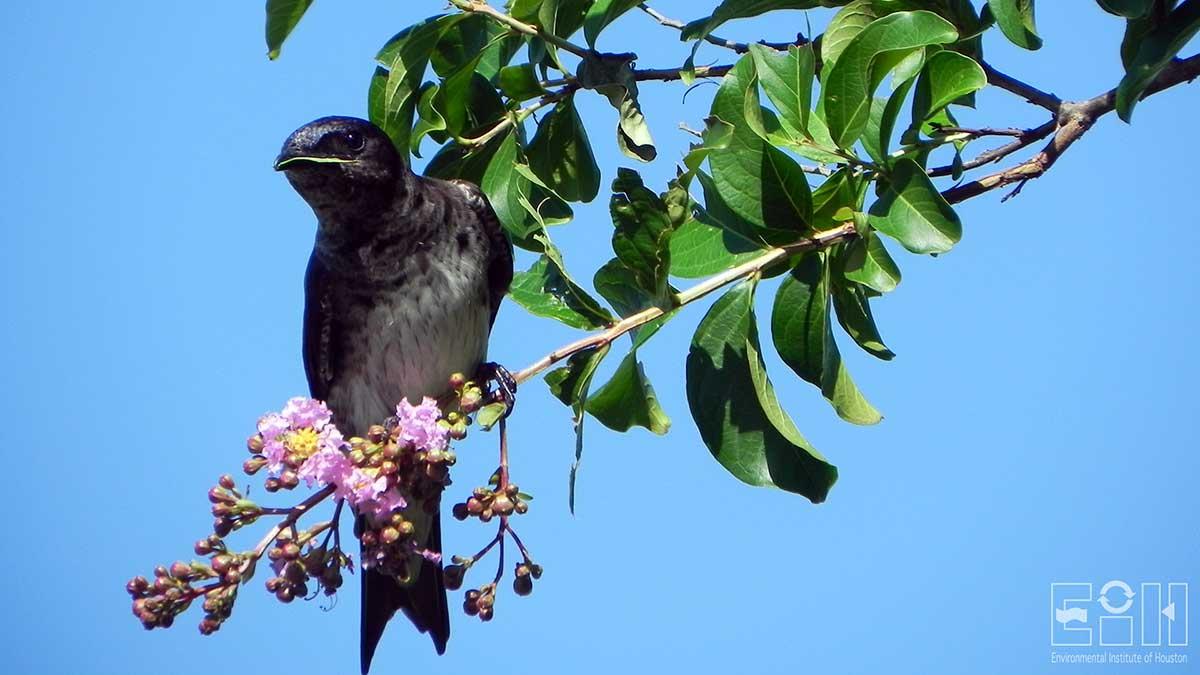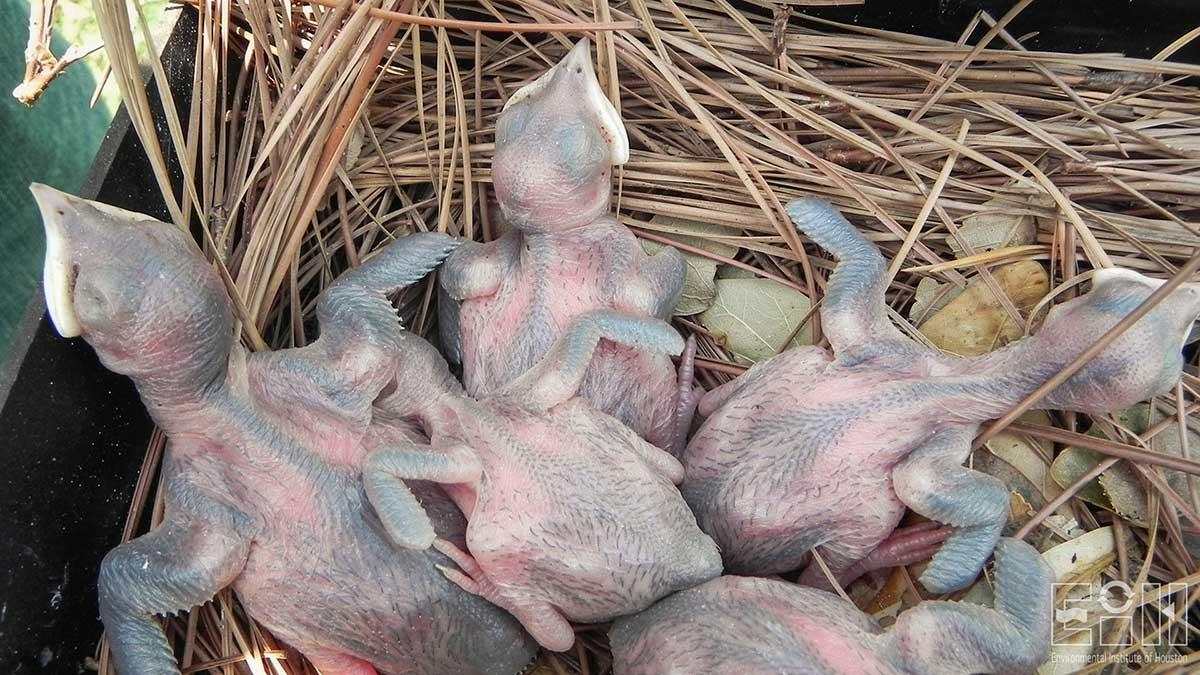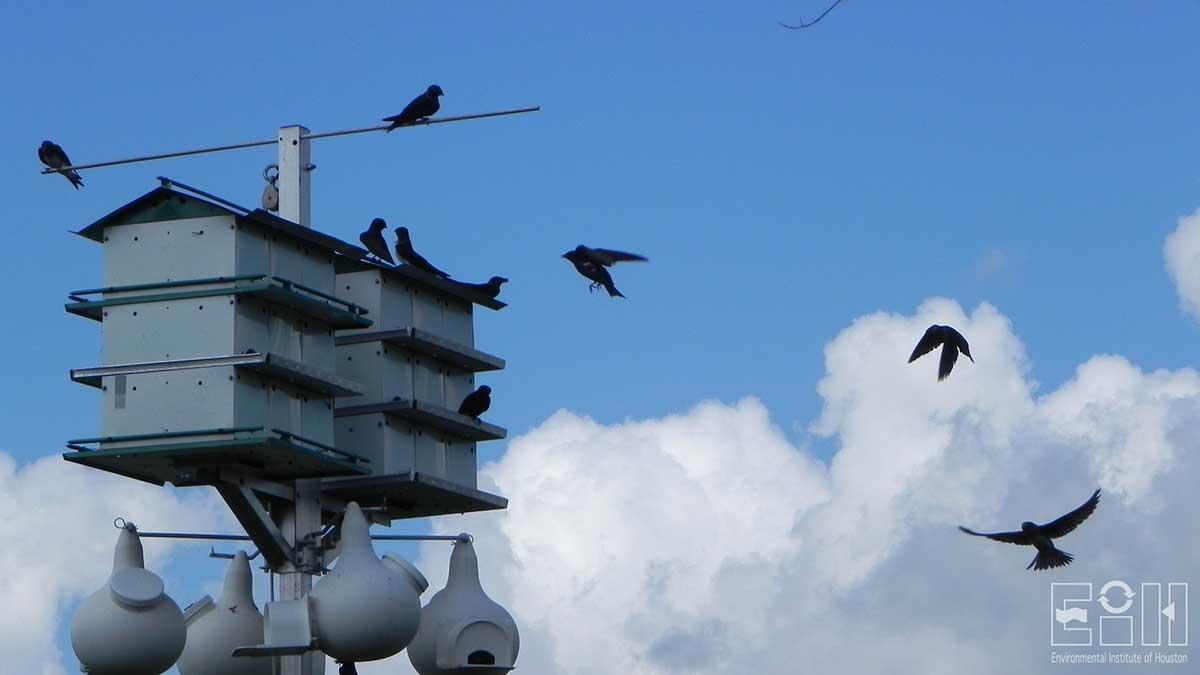
Purple Martin Colony
Our purple martins have returned to South America for the winter. We expect them to begin arriving at EIH in February.
The purple martins (Progne subis) is North America’s largest swallow. It eats insects as it flies, but will also eat them when perched. These swallows are sexually dimorphic, meaning the males and females look different. Males are glossy dark purple, whereas females are lighter in color with grey under parts.
Purple martins living in the eastern U.S. tend to nest in birdhouse apartments such as the one between the NOA I & II buildings on campus. Western birds tend to nest in natural cavities such as old woodpecker holes. Hanging gourds are also used by purple martins.
Purple martins have been nesting on the UHCL campus since 2008. They arrive from their home in South America in mid-February to early March.
- When will the female lay her eggs?
Egg laying commences after nest building is completed, which is indicated by the martins lining the nest with soft, often times green, leaves.
- How many eggs do purple martins usually lay?
Females lay from two to seven all white eggs. The average clutch size is four to five eggs.
- How long will it be before the eggs hatch?
The female incubates the eggs for approximately 15 days, at which point the babies hatch.
- When do the babies leave the nest?
The babies are ready to fledge, at anywhere from 26 to 32 days old. They continue to depend on their parents for food, for a couple of weeks after leaving the nest.
- How long has the UHCL colony been active?
The first season with purple martins nesting at UHCL was 2008. They have been returning every year since then.
- What is the greatest threat to the purple martins on campus?
The greatest threats to the purple martin's survival on campus and in general are two non-native cavity nesting birds--the European starling and the English house sparrow. Both of these species are very aggressive, and for the past 60 years have displaced large numbers of purple martins by taking over the housing intended for the purple martins.
| Date | Observation |
|---|---|
| 2022 | Scout spotted at the colony |
| May 17, 2018 | Babies hatch |
| May 2, 2018 | Sixth (last) egg laid. Based on the average incubation time, we expect eggs to begin hatching between May 16 & 18. |
| May 1, 2018 | Incubation begins |
| April 27, 2018 | First egg laid at 6:55 a.m. Thanks Matt Fendley for submitting the observation! |
| April 5, 2018 | Nest cam goes live. |
| February 27, 2018 | Scout Report - First purple martin of the year spotted by habitat volunteers. |









